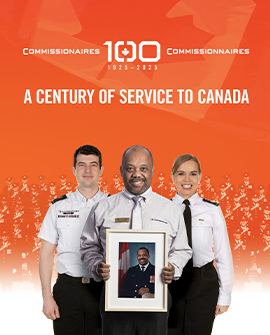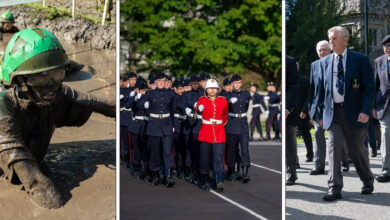Events
Researchers Share Information at Military Mental Health Research Symposium
Earlier this month, researchers, doctors and concerned organizations convened at the Military Mental Health Research Symposium, hosted by the Canadian Institute for Military and Veteran Health Research (CIMVHR) and the Canadian Armed Forces (CAF), to share information about the latest developments in this field. One of the presentations given at the Symposium was by Dr. Elizabeth Roland-Harris on suicide in the CAF.
Harris, a senior epidemiologist at the Department of National Defence, presented findings of the annual Suicide Surveillance report and how to interpret it. She also spoke about the CF Cancer and Mortality Study (CF CAMS I) and gave audiences a brief glimpse of the upcoming CF CAMS II.
The Suicide Surveillance, last released in late summer 2015, looks at the rate and context of suicides in the CAF on an annual basis. Whereas, the CF CAMS I, published in 2011, studied mortality in the Regular Force population between 1972 and 2006, including males and females.
“Being part of the health unit we often get questions about occupational groups or occupational exposures or concerns about certain causes of death. From a statistical perspective, the problem is sometimes it’s hard to determine whether these things actually are about what you would expect if you would compare yourself to the general population. We get these questions, and we are unable to answer them. That was one of the big drivers behind studying up CF CAM I, to be able to look at a full court of CAF members and start answering some of those questions,” said Harris.
Results of the study are compared to the Canadian public.
“Basically, the report found in general, with the exception of aircraft accidents and suicide in released males, the entire full court were below the Canadian level of all causes of death,” stated Harris.
Harris, and her team, are currently working on CFCAMS II. The second report is set to be released early next year.
“The population continues to evolve so we need to continue following it. It’s a snapshot in time. The population changes people get older they go on different deployments. As time evolved it is possible that the outcome will evolve and change, but we won’t know without looking at it,” explained Harris.
CF CAMS II will look at data through 2015, will include Class C reservists, will include mortality in 2017-2018 and will look at cancer morbidity in 2018-2019.
The Suicide Surveillance reports and CF CAM I found that non-commissioned members (NCM) who had a non-voluntary release and served between 1972-1986 were at a higher risk for suicide.
The work done studying mortality in the CAF also shows that deployment may be a factor of suicide in the CAF. However, Harris acknowledges that further work needs to be done to identify deployments.
“In the report, we look at history of deployment as one of the explanatory variables. But that the measure of deployment is extremely crude. And I personally don’t like it very much and the reason I don’t like it is because it basically assumes that deployment is very homogenous event when really it isn’t. People get deployed to different places for different reasons,” explained Harris.
Reports also have found that those in the Army have a higher rate of suicide, especially those in the Combat Arms.
“The concern in the last ten to twelve years in the Army, especially in Combat Arms subset, the ones are more likely to be in active combat, those are the ones most likely as we call it ‘cross the wire,’ those are the ones more at risk. Again the population is so small we don’t have enough statistical power to be able to say conclusively that it’s deployment or that it’s being in the Army,” mentioned Harris.
Data also suggests that NCMs are at a higher risk.
According to Harris, NCMs at risk tend to be younger males who haven’t obtained post-secondary education. The age and level of education is similar to the Canadian male standardized mortally ratio.
“So, is NCM the problem or NCM representative of other risks. It’s a web. They’re so connected,” explained Harris.
However, Harris points out that suicide is generally multifaceted, and there are many factors that cause someone to commit suicide. At the same time, reports have various subtleties and nuances.
“The numbers suggest that yes being in the Army puts you at a higher risk, they are statistically significantly higher. However, Army is again a very general categorization, and there are underlying factors that may contribute to someone being in Army versus non-Army that may also contribute to an increased risk. I’m not trying to say that Army is not a concern, it obviously is, but part of trying to understand what’s happening in the Army is understanding those other underlying factors that aren’t presented in the analysis, but we know are concerns based on the literature, based on clinical evidence, etc.,” said Harris.
Harris and the reports serve as a knowledge translator for the CAF. Once the reports are analyzed and compiled, they are passed on to policy makers within the CAF to make evidence-based decisions.










